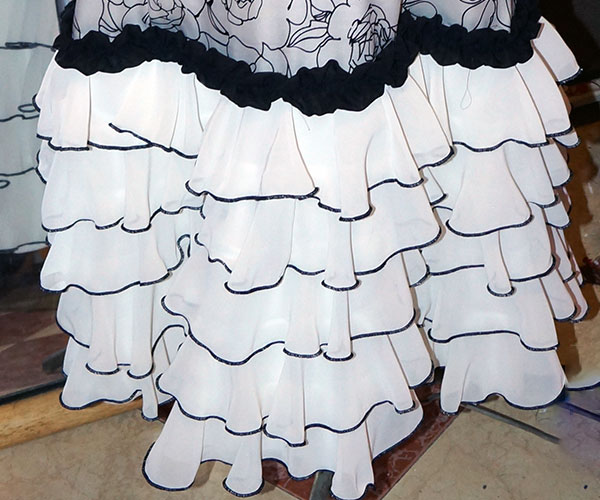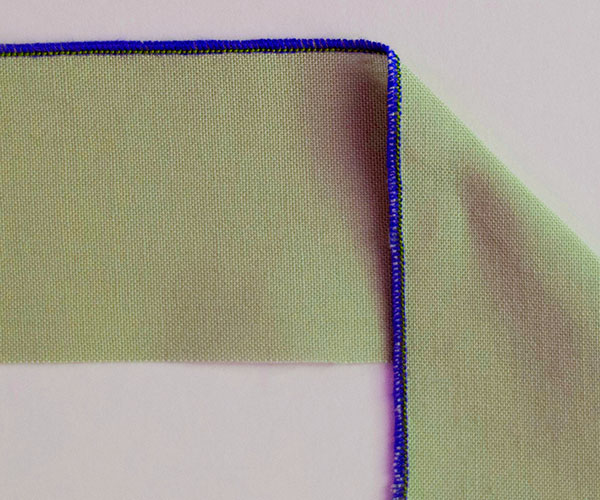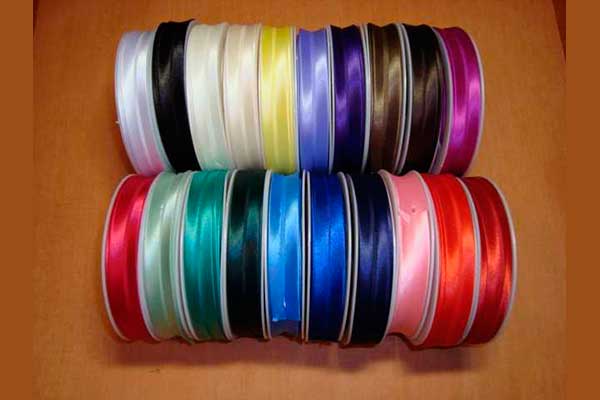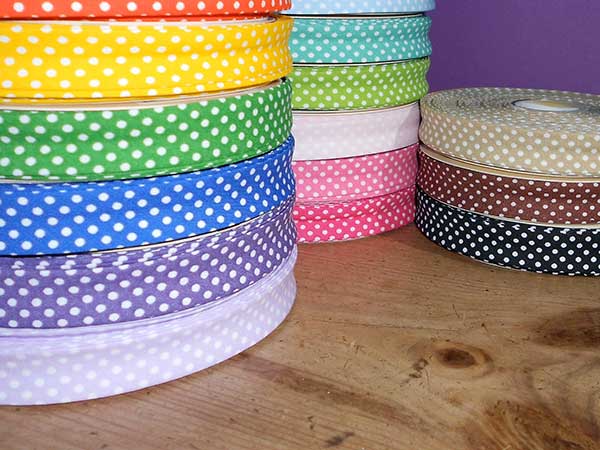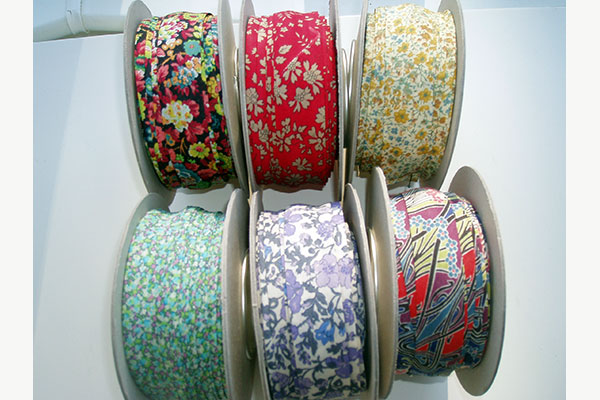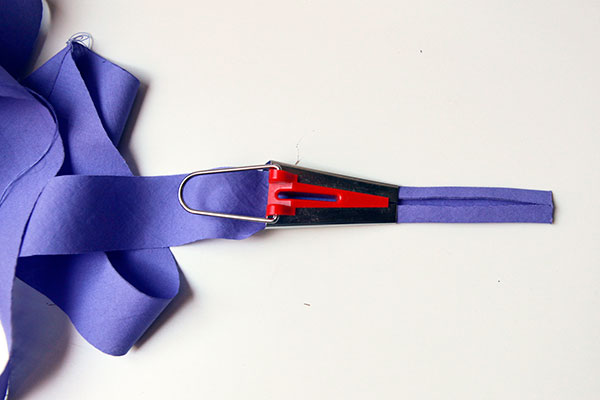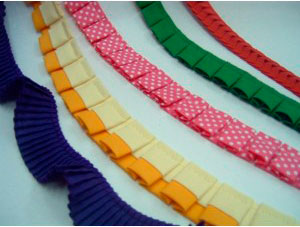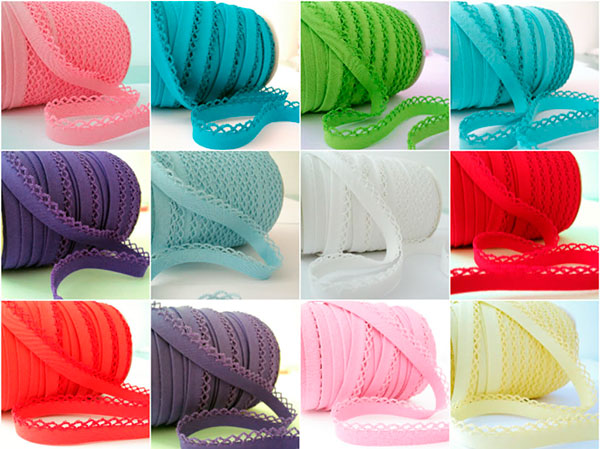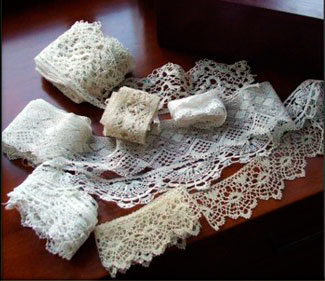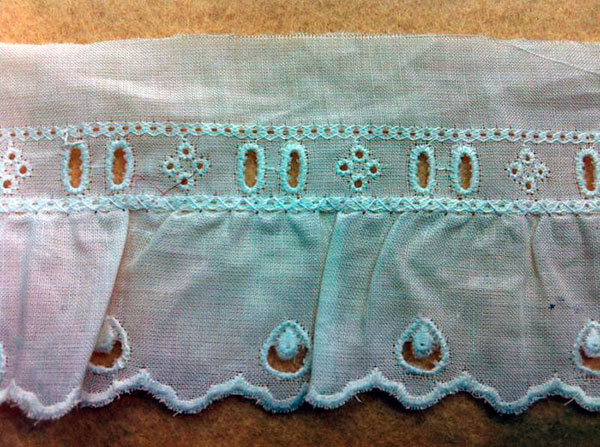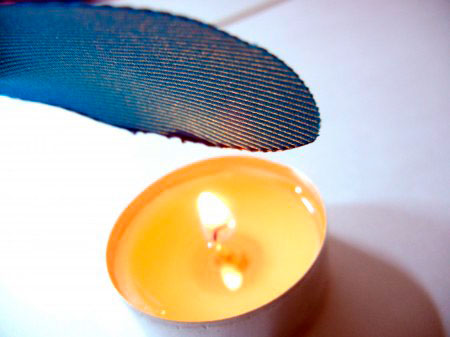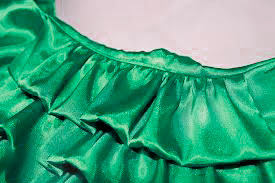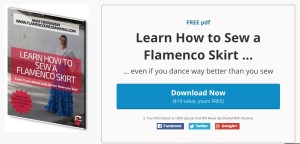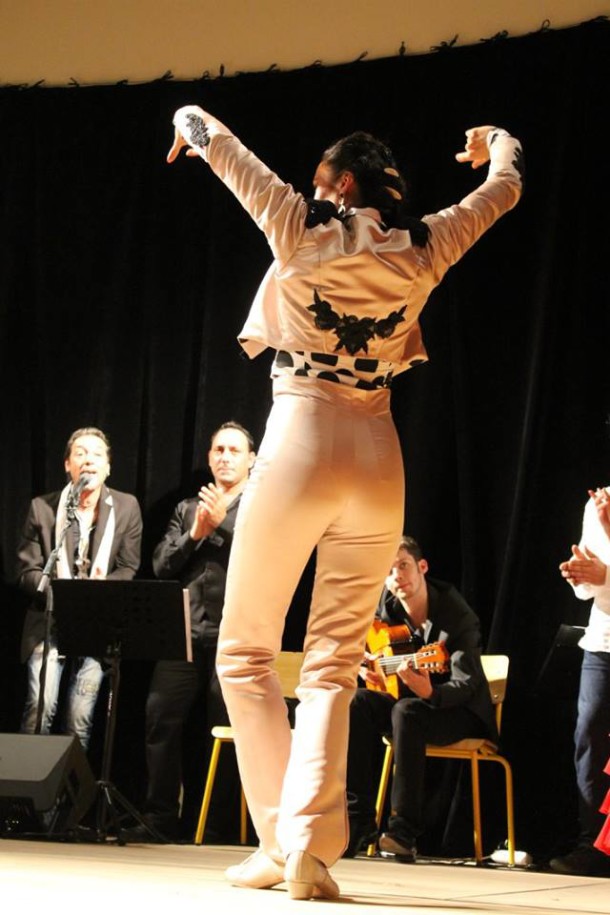Ruffles are an important design element of most flamenco dance costumes. In a previous article I’ve given a brief overview of the different types of commonly used ruffles. Today I’ll show you several typical ways of finishing the outer edges of the ruffles:
Rolled Hem
In most cases I finish ruffle edges with a rolled hem using an industrial serger. You can achieve a similar result using a domestic serger although it might not turn out quite as dense and is relatively slow.
Looking for a serger? Click here to check out the most popular ones at Amazon
Like the look but don’t have a serger?
Julie, a Flamenco Dressmaking client from the US, was kind enough to share her experience with 2 sewing machine presser feet she has tried out:
“This is the one I used and had the most success with. It basically has a little edge to guide your fabric along straight, and a little bar that holds the fabric flat at the edge so it doesn’t curl up when you run the zig-zag or overcast stitch over it. If you use a very narrow zig zag over the edge it gives a pretty good result.“
“This one is more like an actual serger in that it has a cutting blade on the side of it, and it makes the overcast stitch and then cuts off the remainder to give it a clean edge. I didn’t use this for the ruffles because there was no seam allowance on it and therefore nothing to cut off. It is also REALLY slow! But I can definitely see where I would have a use for it.”
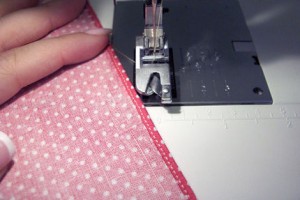 For gathered ruffles cut from a straight strip of fabric a narrow rolled hem made using your regular sewing machine is another option.
For gathered ruffles cut from a straight strip of fabric a narrow rolled hem made using your regular sewing machine is another option.
Bias Binding
Finishing ruffles with a bias binding, either hand-made from matching fabric or bought by the meter, is the prefered option if
- your fabric is too thick for a rolled hem
- you want a stronger colour contrast than the narrow rolled hem gives you
- you want your ruffles to have more volume
There is a huge variety of bias bindings available
If you prefer making your own have a look at this little helper
Adding Edging
If you like to add some elegance go for any of the many types of edgings. Some come pleated, others have a straight edge. If you are making gathered ruffles from straight fabric strips any of them will work, for circular ruffles either use a pleated edging or gather or pleat a straight edging to compensate for the outer curve of the ruffle.
No Finish
Sometimes you may work with fabrics for which none of the options described so far give a good result. If the fabric doesn’t fray you may not need a finish at all. For very thin fabrics like chiffon or georgette you can cut straight strips twice as wide as the ruffle you are making, fold them lenthwise and use the fold as a finish. I’ve also on occasion sealed the edges by carefully burning them (not a good idea for light coloured fabrics, works best for black).
As always, your imagination is the limit. Have fun sewing!
Wondering whether you can pull off making your own flamenco skirt?
It’s not as difficult as you might think. To get started click here or the image below to get a FREE pdf tutorial.
I take you through the process step by step, with clear instructions and 50 color photos, from start to gorgeous finish, so you’ll be able to show off your very own skirt creation, even if your sewing machine has been collecting dust for a while (or you need to borrow one)

